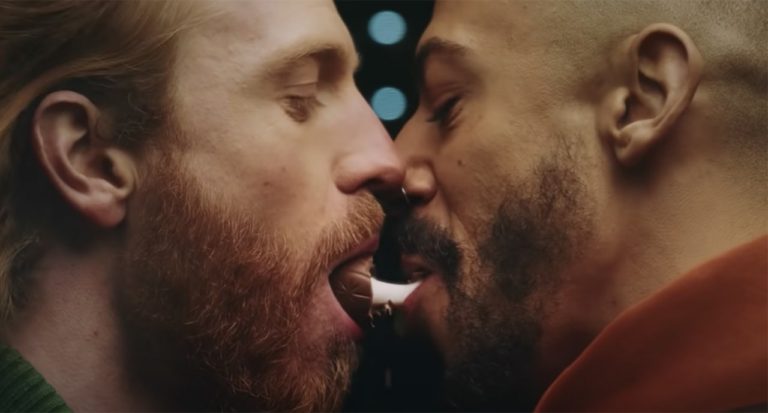

Cadbury‘s desicion to feature a gay couple sharing a gooey Crème Egg in its latest campaign shows progress in advertising’s mission to reach more diverse audiences and truly reflect society, says Chris Kenna, chief executive of diverse media network Brand Advance. And so does the response from audiences and regulators.
Last week, over 25,000 people signed a ridiculous petition to ban an ad from Cadbury, that was created by creative agency Elvis.
The campaign features a real-life same-sex male couple sharing a Crème Egg. And it‘s a representation of true society. Gay couples exist – and yes they eat Crème Eggs – so what?
Despite the ad being praised by many viewers, it also sparked fury and quickly racked up signatures not just for anti-LGBTQ reasons, but religious ones too, claims of sexual objectification somehow mixed in amid the uproar.
Cadbury has stood by the creative, saying: “Cadbury has always been a progressive brand that spreads a message of inclusion, whether it is through its products or brand campaigns.
“We are proud of our Golden Goobilee advert which celebrates the many ways that everyone can enjoy a Cadbury Creme Egg. To illustrate this and showcase the joy our products bring, a clip of a real life couple sharing a Cadbury Creme Egg was included in the advert.”
For its part, the Advertising Standards Authority (ASA) said it will not be taking any further action on complaints against the advert.
A spokesperson for the regulator confirmed it had received and assessed 40 complaints about the gay kiss in the Cadbury advert, but did not “consider that the advertising rules have been broken”.
To me what the furore over this kiss highlights most of all is that no matter how far we think society has come, there’s always going to be another example of a group of people complaining about minority groups taking a star role in media.
Just months ago, we saw a similar backlash to the Sainsbury’s Christmas advert that featured a Black family – a family representative of 13.8% of the UK population who are from minority ethnic backgrounds. While petitions, criticism and complaints aren’t new to brands reaching diverse audiences, neither is the depiction of diverse communities in the media itself.
In 1994 Ikea marked a poignant moment in advertising when the first gay couple in a television ad debuted.
Since then, it has established itself as a trailblazer in diverse campaigns and other brands have followed suit in pushing the boundaries of stereotypes in advertising.
It’s been a slow process but the Black Lives Matter movement has also shone a light on the issue and encouraged a call amongst the media industry to enact change.
What we’re going through now is a change unlike any other generation before us.
Brands are finally making strides to catch up in reflecting true society. And if 25,000 people don’t like it, does it really matter?
Only the goodwill survive
We know advertising can change society. I still remember the ‘Think!’ ads with a hard-hitting message to wear your seatbelt in a car – now, you get behind the wheel and plugging in is the most natural thing to do.
While being a big brand has its benefits, its impact on society transpires into huge responsibility. There’s no doubt a lot of hardship at the moment with the pandemic, Brexit, the injustice, and brands can either make a statement, be bold or be relevant, or they can choose not to.
The ones that do their part in reaching diverse communities authentically will be the ones that survive.
In Cadbury’s case, the brand chose to represent a diverse community outside of Pride Week or any dedicated diversity and inclusion month, week, or day.
If brands really want to shun stereotypes and celebrate diversity in all its forms, then it should be part of their campaigns all year around to move the industry in the right direction.
Hats off to Cadbury
Cadbury took a risk and I commend its response. Despite a rollercoaster of reactions, from celebrating the advert to complete backlash, the brand stands by its message of inclusion.
We see responses like this often – the anti-Cadbury Crème Egg ad petition isn’t the first and won’t be the last.
But, how a brand handles itself says a lot about its values. It’s also a smart move from a commercial perspective.
Brands that create controversy are naturally more spoken about, whether it’s good or bad, and that’s publicity it didn’t have before.
Solidarity wins
In this instance, Cadbury represents progress in advertising’s mission to reach more diverse audiences and truly reflect society.
However, if we really want to drive societal change and normalise a gay couple in an advert, brands must come together in solidarity.
Following Sainsbury’s Christmas advert criticism, its competitors became allies to unite in a message that stood by its decision to depict a Black family.
The act of solidarity said to the people who found the advert offensive, that if you don’t want to shop with Sainsbury’s then don’t shop with us either.
It’s this power brands have that can be used for good – the more diverse adverts we see, the more it will become accepted.
Now, I challenge brands to stand by Cadbury and show their support of a brand that is weathering the storm for being relevant, and to be a part of generation that makes real change.